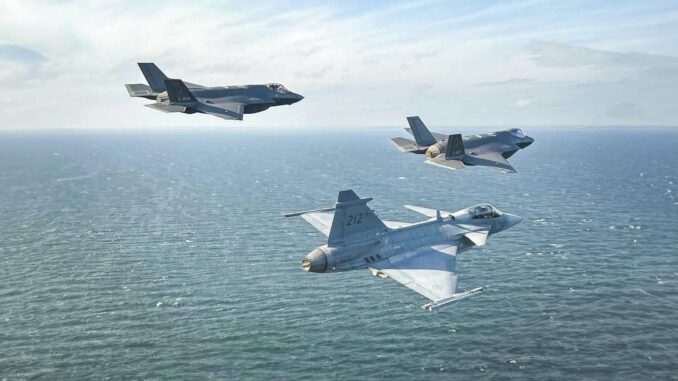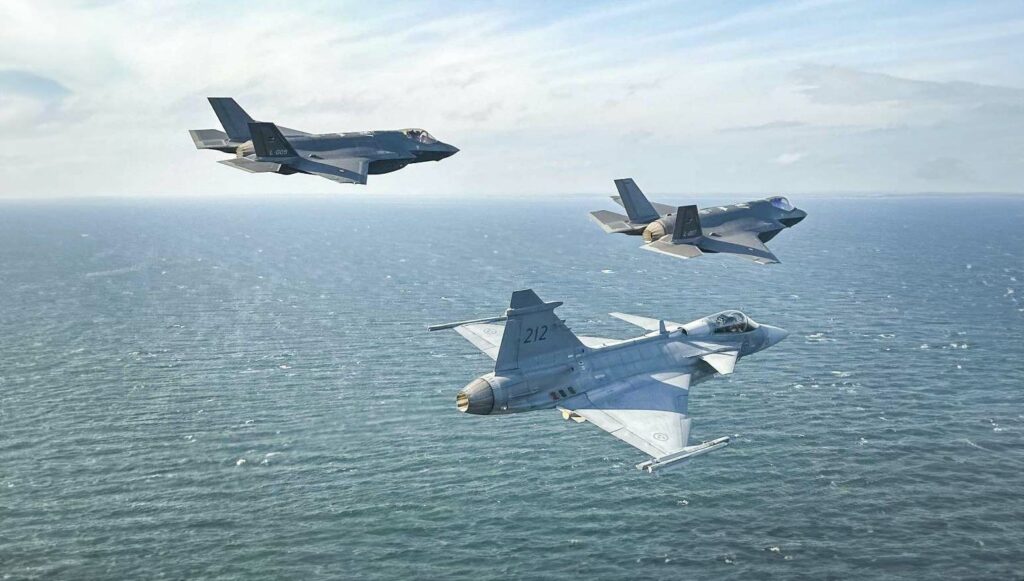
Explore the details of the first joint exercises involving Danish F-35 and Swedish Gripen fighters, highlighting advanced military cooperation and operational integration between Denmark and Sweden.
The air forces of Denmark and Sweden have marked a milestone in Nordic military cooperation by conducting joint air exercises involving fifth-generation fighter aircraft. This historic event, involving Danish F-35s and Swedish Gripen JAS-39s, illustrates operational integration and a shared commitment to excellence in air defense. This article details the technical, strategic and diplomatic aspects of these maneuvers, highlighting their importance for regional security and NATO dynamics.
Enhanced cooperation in Danish airspace
The exercises, carried out in Danish airspace around the waters of the Kattegat, not only strengthened military ties between the two nations, but also served as a platform for demonstrating interoperability between aircraft of different generations. The joint engagement of F-35s and Gripen JAS-39s, operating from Skrydstrup air base in Denmark and Ronneby air base in Sweden, respectively, highlights a common ambition: to ensure greater operational effectiveness and responsiveness in air combat scenarios.

Integration of operational capabilities
Integration between the fifth-generation F-35 fighter and the fourth-generation Gripen is a central pillar of these exercises. The F-35, with its superior intelligence-gathering and sharing capabilities, provides an enriched picture that benefits both forces. This synergy enables a significant improvement in combined operational capability, with the Gripen providing additional firepower and tactical flexibility.
Strategic and security implications
These exercises transcend mere bilateral collaboration; they symbolize a step forward in NATO’s collective defense strategy, particularly in the Nordic region. The ability of the two aircraft to operate jointly improves defensive posture and regional deterrence, opening up new prospects for interoperability within the alliance and beyond.
Future developments and prospects
The strengthening of cooperation between Denmark and Sweden, illustrated by these exercises, paves the way for a deeper integration of air combat capabilities. The implications go beyond purely military aspects, encompassing the political and strategic spheres, with a potential impact on future defense configurations in the Nordic region and within NATO.
Allied exercises between Denmark and Sweden mark a significant step towards closer military collaboration and operational integration. These maneuvers highlight the importance of compatibility and interoperability between different generations of combat aircraft, essential for maintaining air superiority in modern warfare. They also reflect a shared commitment to enhanced collective security, crucial to the future stability of the Nordic region and NATO’s overall defensive structure.
War Wings Daily is an independant magazine.